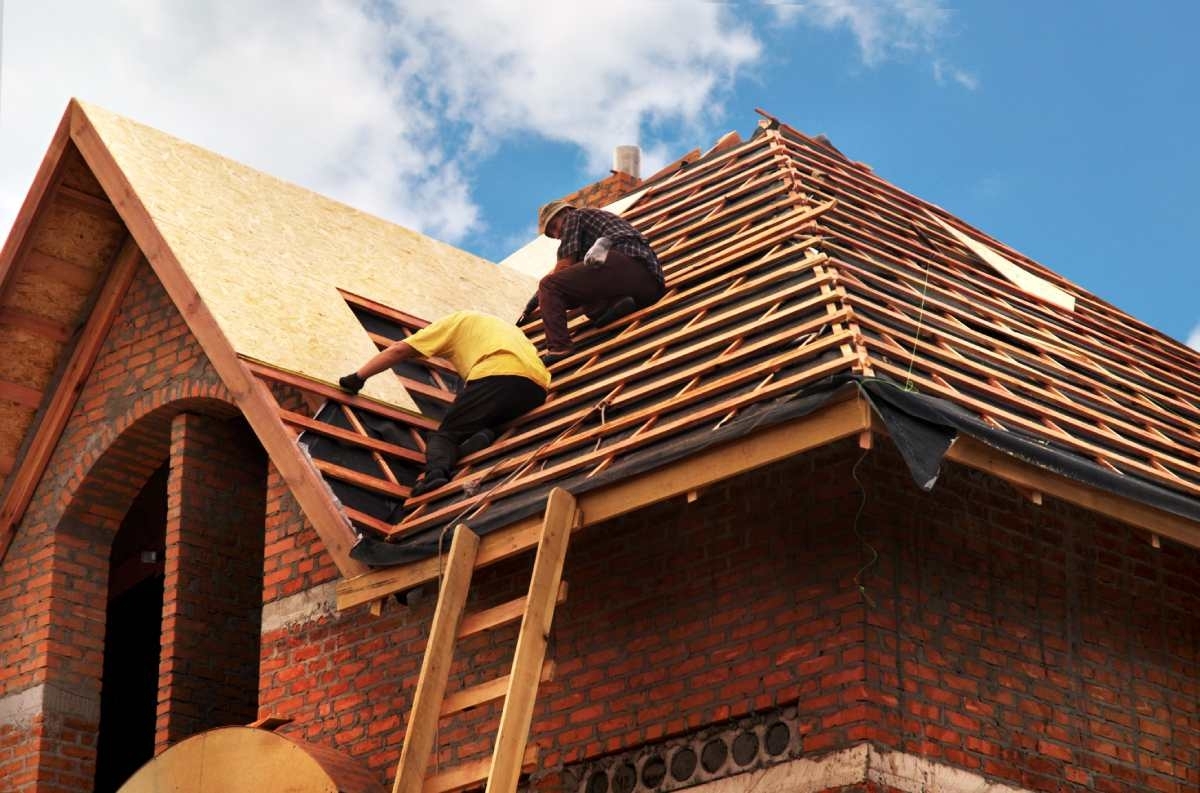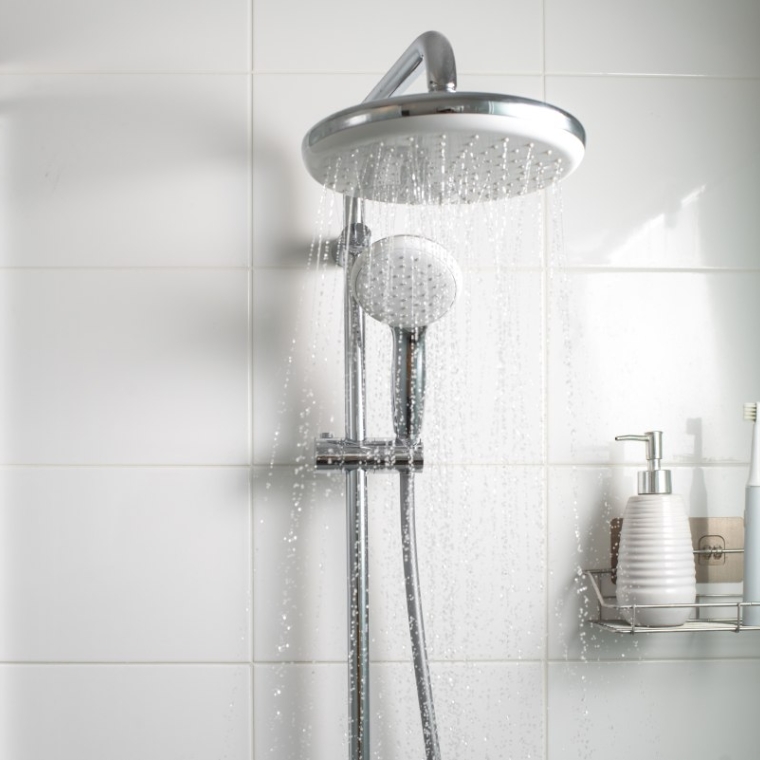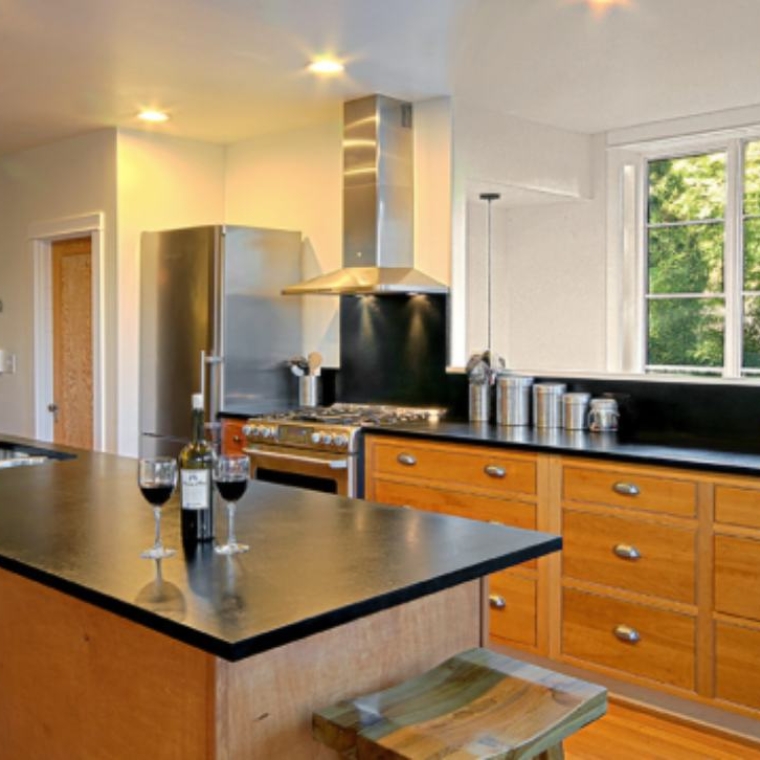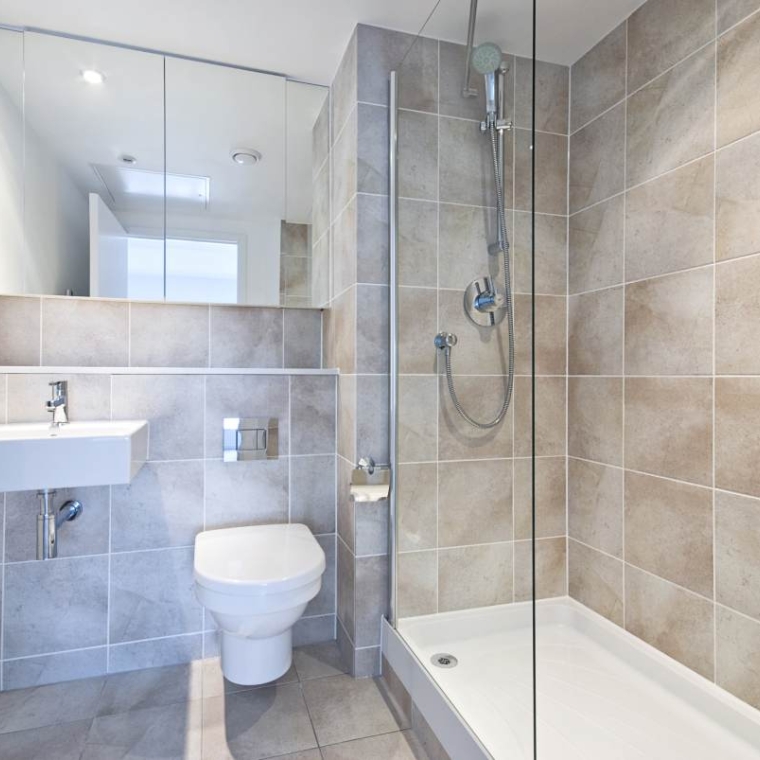Roofing Styles and materials
Best Roofing Styles & Materials For Your House [2024]
Roofing Styles and Materials | Roof Types | Roof Sizes and Measurements | Roof Designs | Cost-Effective and Longlasting Materials | Roofing Accessories | Best Roof Type For Your Home | FAQs
Roofing Styles and Materials
Exploring house roof types and roofing styles is essential when planning your next project. The most common roofing types include gable, hip, flat, and mansard.
Materials are just as varied as the styles, including metal roofing, slate, wood and asphalt.
Interested in exploring roofing options for your house? Read this guide or find the perfect match for your roofing need by clicking here or on the form above.
Check the Cost of Roof Installation in Your Area
Get QuotesRoofing Styles and Material: Overview
When you're considering a new roof, the vast array of roofing materials and styles can be overwhelming. It's crucial to choose the best roof material that not only complements the architectural style of your home but also offers longevity and performance. Let's dive into a brief overview.
Roofing styles have evolved significantly over the years. From traditional gable and hip roofs to modern roof designs that incorporate sleek lines and eco-friendly materials, there's a style to suit every home.
A roofing materials list would typically include different types of roof tiles like asphalt shingles, metal panels, wood shakes, clay tiles, and synthetic products. Each material has distinct advantages, whether it's the affordability of asphalt shingles or the durability of metal roofing.
Roofing ideas extend beyond just materials and styles; they also encompass energy efficiency, maintenance, and the impact on your home's overall appeal. For instance, choosing a light-colored roofing material can reflect sunlight and help keep your home cooler in warm climates.
For those planning a roof upgrade, it's smart to consider all these factors.
Discover comprehensive information on the basics of roof replacement by visiting this tailored roof replacement guide.
Roof types
When you're considering a roof for your home, the variety of options can be both exciting and a bit daunting. It's about finding the right balance between aesthetic, functionality, and durability.
Here's a detailed look at the most common house roof types to help you make an informed decision:
|
Roof Type |
Material Options |
Characteristics |
Common Uses |
|---|---|---|---|
|
Gable Roof (Standard Roof) |
Asphalt shingles, wood shakes, metal |
Triangular shape, easy water runoff, classic look |
Residential homes, garages |
|
Hip Roof |
Clay tiles, concrete tiles, metal |
Slopes on all sides, stable and durable, offers extra living space |
Residential homes in windy regions |
|
Flat Roof |
Rolled roofing, rubber, PVC, TPO |
Minimal to no pitch, easy to construct, can be used as living space |
Commercial buildings, modern homes |
|
Mansard Roof |
Slate, metal, asphalt shingles |
Four-sided with a double slope on each side, creating additional living space |
Older and historic homes |
|
Gambrel Roof |
Wood shakes, asphalt shingles, slate |
Similar to a Mansard but with two sides, often seen on barns |
Barn-style houses, storage buildings |
|
Shed Roof |
Single-ply membrane, metal, asphalt shingles |
Single slope, often used for porches or additions |
Porches, home additions |
|
Butterfly Roof |
Metal, membrane |
V-shaped, two tandem pieces sloping down on the outside |
Modern eco-friendly homes |
|
A-Frame Roof |
Asphalt shingles, cedar shakes |
Steeply-angled sides that form the letter 'A' |
Cottages, chalets |
- Each roof type offers a range of types of roof tiles and types of roof shingles to match.
- Some types of roofing shingles excel for their durability or aesthetic
- Different types of roof shingles are more cost-effective
- For residential types of roofs, you might choose traditional materials like asphalt shingles or wood shakes, which offer types of roof shapes that blend with suburban environments.
- Standard roof designs often use asphalt shingles due to their affordability and ease of installation.
Types of roof construction vary, so it's essential to choose a style and material conducive to your region's climate and your home's structural design.
When selecting types of shingles roof, consider factors like longevity, maintenance, and cost.
Understanding Roof Sizes and Measurements
When planning for a new roof, understanding the terminology and measurements used in roofing can be crucial.
Here's a simplified list to help you get a handle on roof sizes and measurements:
- A "square" in roofing terminology is a unit of measurement that equals 100 square feet.
- To calculate the number of squares on a roof, divide the total square footage of the roof by 100.
- One roofing square (100 square feet) is typically made up of three bundles of shingles.
- The actual size of the shingles within a square can vary depending on the type and brand.
The slope, or pitch, of a roof is measured as the number of inches it rises vertically for every 12 inches it extends horizontally.
Common slopes include 4/12 (moderate slope) and 6/12 (steep slope).
To estimate the number of shingles needed, measure your roof in squares and add 10-15% for waste.
- When ordering from a supplier, it's important to consider all materials: shingles, underlayment, flashing, and gutter systems.
- Good suppliers will help you estimate additional materials based on roof complexity and size.
Visualizing Roof Designs
When envisioning your home's new or improved roof, understanding the roofing layers is crucial. A typical roof has several layers: a waterproof barrier, underlayment, shingles or tiles, and sometimes reflective coatings or other advanced materials. Each layer plays a part in protecting your home.
Exploring roofing pictures can be inspiring, giving you a real-world view of various materials and styles. These images can showcase how different roofing types withstand the elements, as well as their longevity and aesthetic appeal.
For a solid construction roof, the process starts with a solid frame, followed by meticulous placement of each layer, ensuring your roof can endure weather and time.
It’s vital to choose materials that complement the structural integrity of your building while aligning with your personal style preferences.
Cost-Effective and Long-lasting Materials
Choosing the right material in vast roofing materials list is a vital part of your home improvement journey. Let's explore cost-effective and long-lasting materials that provide both quality and value.
Here's a concise overview of affordable roofing ideas for different options:
- Asphalt Shingles: This is the most common and cost-effective choice for residential roofing. They come in a variety of colors and styles to match your home's aesthetic.
- Metal Roofing: Initially more expensive, metal roofs offer longevity and durability, potentially saving you money in the long run.
- Clay Tiles: While not the cheapest upfront, they are incredibly durable and offer a classic look.
- Concrete Tiles: These provide a balance of affordability and durability, with a lifespan that competes with more expensive materials.
- Three-tab Shingles: They are thinner and more affordable than architectural shingles but offer a shorter lifespan.
- Architectural Shingles: A bit more expensive but provide a layered, durable roof with aesthetic appeal.
- Flat Roofs: These can be less expensive due to the simplicity of their design and the ease of installation.
- Gable Roofs: They are simple to construct and effectively shed water and snow.
- Rolled Roofing: This is a very low-cost, mineral-surfaced roofing product, commonly used for buildings with a low-slope roof pitch in North America.
- Slate Tiles: Known for their natural appearance and extremely long lifespan.
- Synthetic Roofing Products: These can include rubber, plastic, and polymer roofing, designed to give the color, look, and texture of natural materials like slate and wood. These products are manufactured to be strong, cost-effective, and with less maintenance required.
To get more insight into the costs associated with these materials consider checking out roofing prices, to learn the cost elements of roof installation for 2024.
Below is a roofing materials list based on cost and longevity:
|
Material Type |
Cost-Effectiveness |
Longevity |
|---|---|---|
|
Asphalt Shingles |
High |
15-30 years |
|
Metal Roofing |
Moderate |
40-70 years |
|
Clay Tiles |
Low (initially) |
Over 50 years |
|
Concrete Tiles |
Moderate |
Over 50 years |
|
Three-tab Shingles |
High |
10-20 years |
|
Architectural Shingles |
Moderate |
15-30 years |
|
Flat Roof Materials |
High |
Varies |
|
Gable Roof |
High |
Varies |
|
Rolled Roofing |
High |
5-10 years |
|
Slate Tiles |
Low (initially) |
75-200 years |
|
Synthetic Products |
Moderate |
50+ years |
Modern Roofing Ideas
Exploring modern roofing materials is a smart move. Whether you aim for durability or aesthetic appeal, the options are vast.
If flat roof options suit your style, you're in luck – types of roofing materials for flat roofs have expanded, offering both cost-effective and innovative choices. Roof material for flat roofs is also usually less expensive.
The choice of the roof cover material is crucial.
For flat roofs, traditional options like rolled composition roof materials are popular due to their ease of installation and cost-effectiveness.
These materials are comprised of layers of bitumen and reinforcing fabrics that create a barrier to protect your home from the elements.
On the other hand, composition roofs offer a blend of materials such as asphalt, fiberglass, and mineral granules. This combination provides a balance between affordability and longevity, making it a common choice for residential roofing.
Another option for flat roofs is the torch down roofing method, which involves layers of modified bitumen melted together with a torch to create a waterproof seal. While the torch down roofing cost may be higher due to the complexity of installation, its durability makes it a worthwhile investment.
Finally plastic roof shingles are a newer entry into the roofing market, praised for their longevity and ease of maintenance. Unlike traditional materials, they resist rot and rust, offering a practical solution for homeowners looking for long-term value.
Innovative Roofing Accessories
When looking to enhance your home's roof, consider these roofing accessories and materials to ensure a durable and functional rooftop:
- Solar Reflective Shingles: These are designed to reflect more sunlight and absorb less heat than a standard roof.
- Rubberized Roof Underlayment: A strong underlayment that can help prevent leaks and provides an extra layer of protection.
- Lead Flashing: Used around chimneys and joints, this helps to prevent water penetration and damage.
- Gutter Guards: Keep gutters free from debris, reducing maintenance and preventing blockages.
- Roof Vents: These help to ventilate the attic, reducing the build-up of heat and moisture.
- Insulation: Proper insulation can help in maintaining temperature and saving energy costs.
- Skylights or Roof Windows: Introduce natural light into your home, potentially reducing energy costs.
- Roof Sealants: These can help to prevent leaks and extend the life of roof materials.
Make sure to explore a comprehensive roof material list when planning your project to choose the best options for your specific needs. These innovative products can enhance the functionality and longevity of your roofing system.
Roofing Ideas for Different Climates
When you're considering roofing for different climates, it's crucial to select materials and a roofing structure that can withstand local weather conditions.
For areas with heavy snowfall, for example, a steeply pitched roof made of high-quality slate or metal can help prevent snow accumulation. In contrast, hot and dry climates benefit from light-colored or reflective roofing materials that can deflect the sun's heat.
The best materials roofing pros will use in hurricane-prone regions are those that offer wind resistance and durability, such as reinforced concrete or certain high-grade metal roofing systems. Coastal homes may also require materials resistant to salt spray and moisture.
For moderate climates, you might opt for traditional types or roof tiles or shingles, which provide both aesthetic appeal and reliable performance without the need for specialized features.
In every case, the integrity of the roofing structure itself is just as important as the material. Proper installation, quality underlayment, and regular maintenance are key to ensuring that your roof can hold up against the specific challenges posed by your local climate.
It's wise to discuss options with a roofing specialist who can provide tailored recommendations based on your region's weather patterns and your home's specific needs.
Best Roof Type For Your Home
Choosing among the best house roof types is a vital decision that affects not only the aesthetics but also the durability and functionality of your home.
Whether you prefer a simple roof or are considering the different types of roof available, the right choice can enhance your home's protection and curb appeal.
Click here to check out the price and best options for your home, directly tailored for you from a local professional.
Check the Cost of Roof Installation in Your Area
Get QuotesFAQs
The five main types of roof styles commonly seen in American homes are:
- Gable Roof: Characterized by its triangular shape, it's one of the most popular roof styles due to its simple design and effectiveness in shedding water.
- Hip Roof: Has slopes on all four sides that are equal in length. The sides come together at the top to form a ridge, providing stability and resistance to strong winds.
- Flat Roof: As the name suggests, this roof is flat, or almost flat. It's commonly seen in commercial buildings but is also used in modern residential designs.
- Mansard Roof: A four-sided gambrel-style hip roof characterized by two slopes on each of its sides. The lower slope is steeper than the upper one, and it often contains dormer windows.
- Gambrel Roof: Similar to a mansard roof but with two sloped sides instead of four. It's often associated with barns or Dutch Colonial style houses.
Beyond the five main styles, here are five additional types of roofs:
- Shed Roof (Lean-to Roof): A single, sloping roof, usually attached to a taller wall.
- Saltbox Roof: A gable roof with asymmetrical sides where one side is more sloped than the other.
- A-Frame Roof: Forms the letter ‘A’ and is characterized by its steep, angular design. This roof style is also the structure's walls.
- Butterfly Roof: A V-shaped roof resembling a butterfly's wings. It's designed for water collection and is often seen in modern eco-friendly homes.
- Jerkinhead Roof: Combines elements of both gable and hip roofs, reducing the potential for wind damage compared to a standard gable roof.
Roofing style refers to the architectural design and aesthetic aspect of a roof. It encompasses the shape, structure, materials, and color of the roof.
Roofing style not only contributes to a home's overall appearance but also plays a critical role in its functionality, affecting its ability to shed water, withstand weather conditions, and provide insulation.
Common materials used in roofing include:
- Asphalt Shingles: Widely used due to their cost-effectiveness and ease of installation.
- Metal Roofing: Known for durability and resistance to extreme weather.
- Wood Shingles or Shakes: Provide a natural look and offer good insulation properties.
- Clay or Concrete Tiles: Highly durable and ideal for homes in warmer climates.
- Slate Roofing: Offers a distinctive appearance and a long lifespan, but is heavier and more expensive.
Choosing a material for your roof depends on several factors including your budget, climate, aesthetic preference, and the structural integrity of your home.
For instance:
- Asphalt Shingles are cost-effective and suit a wide range of styles and climates.
- Metal Roofing is ideal for areas prone to extreme weather conditions.
- Clay Tiles are perfect for warmer climates and add a Mediterranean flair.
- Slate Roofing is suitable for homes that can support its weight and for homeowners who want a roof with a long lifespan and distinctive look.
A roofing square is a unit of measure in roofing that equals 100 square feet. It is commonly used by roofing professionals to estimate the amount of materials and labor required for a roofing project.
For instance, if a roof is 2,500 square feet, it would be 25 squares in roofing terminology.
For any specific concerns or to match with a service professional who can provide more personalized advice, consider using resources like MyGreenHome to connect with experienced pros in your area.
Related Resources
Roofing Basics for Dummies: A Beginner’s Guide
Roof Replacement Guide: All You Need to Know
Roof Installation: Cost Guide for 2024
House Project Success: Your Guide To 200% ROI With Data
Increase Your Home`s Value: 5 Proven Strategies
Last update: 17 May 2025











